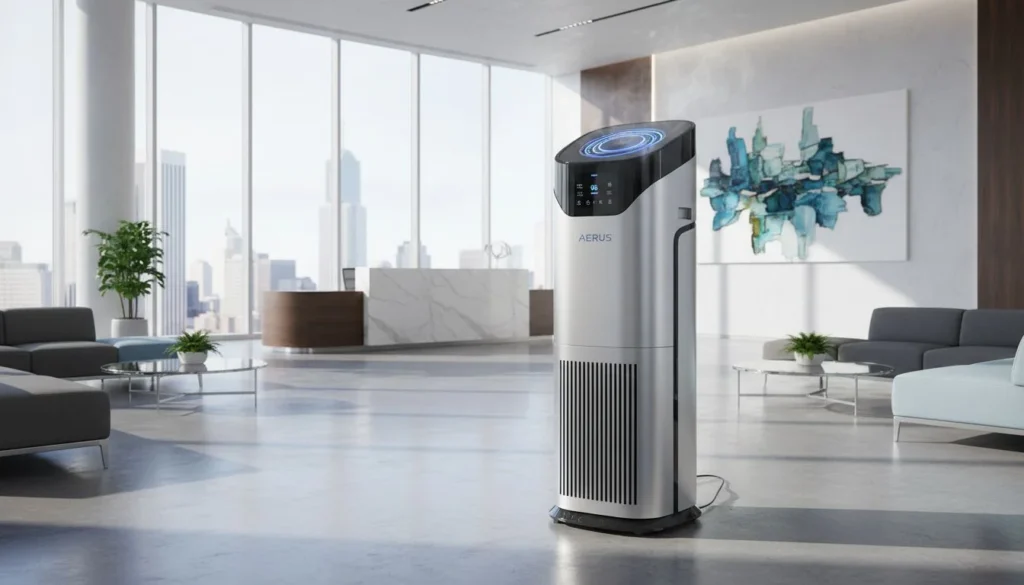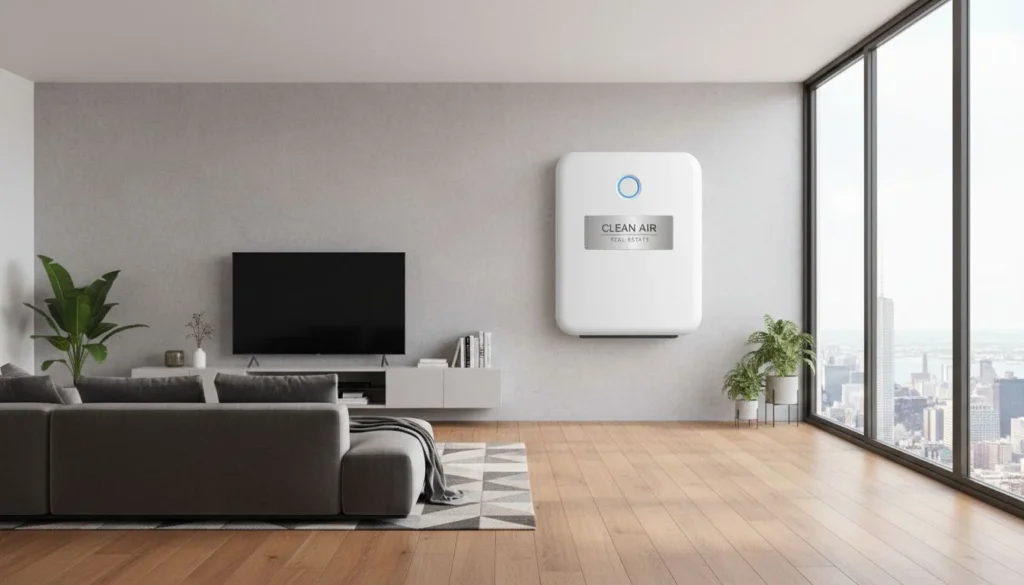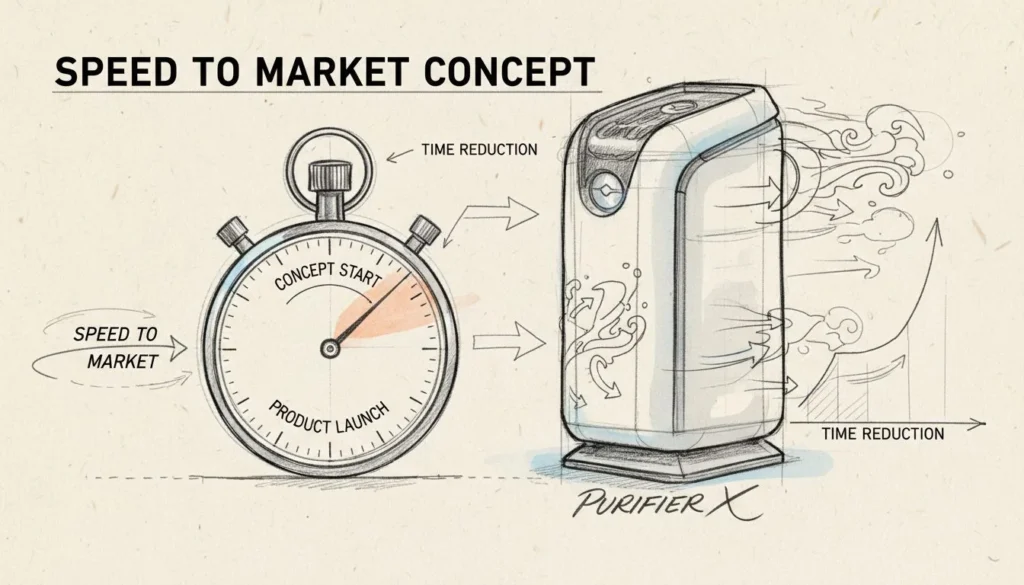
قد يبدو اتخاذ قرار بشأن مكان إنتاج أجهزة تنقية الهواء مثل الوقوف على مفترق طرق، حيث يؤدي كل مسار إلى فرص وتحديات مختلفة.
تتفوق الصين بشكل عام في إنتاج أجهزة تنقية الهواء بسبب سلسلة التوريد الشاملة والتكنولوجيا المتقدمة والتصنيع الفعال من حيث التكلفة. ومع ذلك، تبرز تايلاند كبديل بسبب العوامل الجيوسياسية واعتبارات التعريفة الجمركية.
في حين أن هيمنة الصين واضحة، لا يمكن إغفال دور تايلاند المتنامي. دعنا نتعمق في نقاط القوة والتحديات في كلا البلدين لمساعدتك على اتخاذ قرار مستنير.
الصين أكثر فعالية من حيث التكلفة لإنتاج أجهزة تنقية الهواء من تايلاند.صحيح
انخفاض تكاليف العمالة في الصين ووفورات الحجم تجعلها أكثر فعالية من حيث التكلفة.
ما الذي يجعل الصين رائدة في تصنيع أجهزة تنقية الهواء؟
تنبع براعة الصين في تصنيع أجهزة تنقية الهواء من سلسلة التوريد القوية والتقدم التكنولوجي.
تتفوق الصين في تصنيع أجهزة تنقية الهواء بفضل سلسلة التوريد الواسعة والتكنولوجيا المتطورة وكفاءة التكلفة.
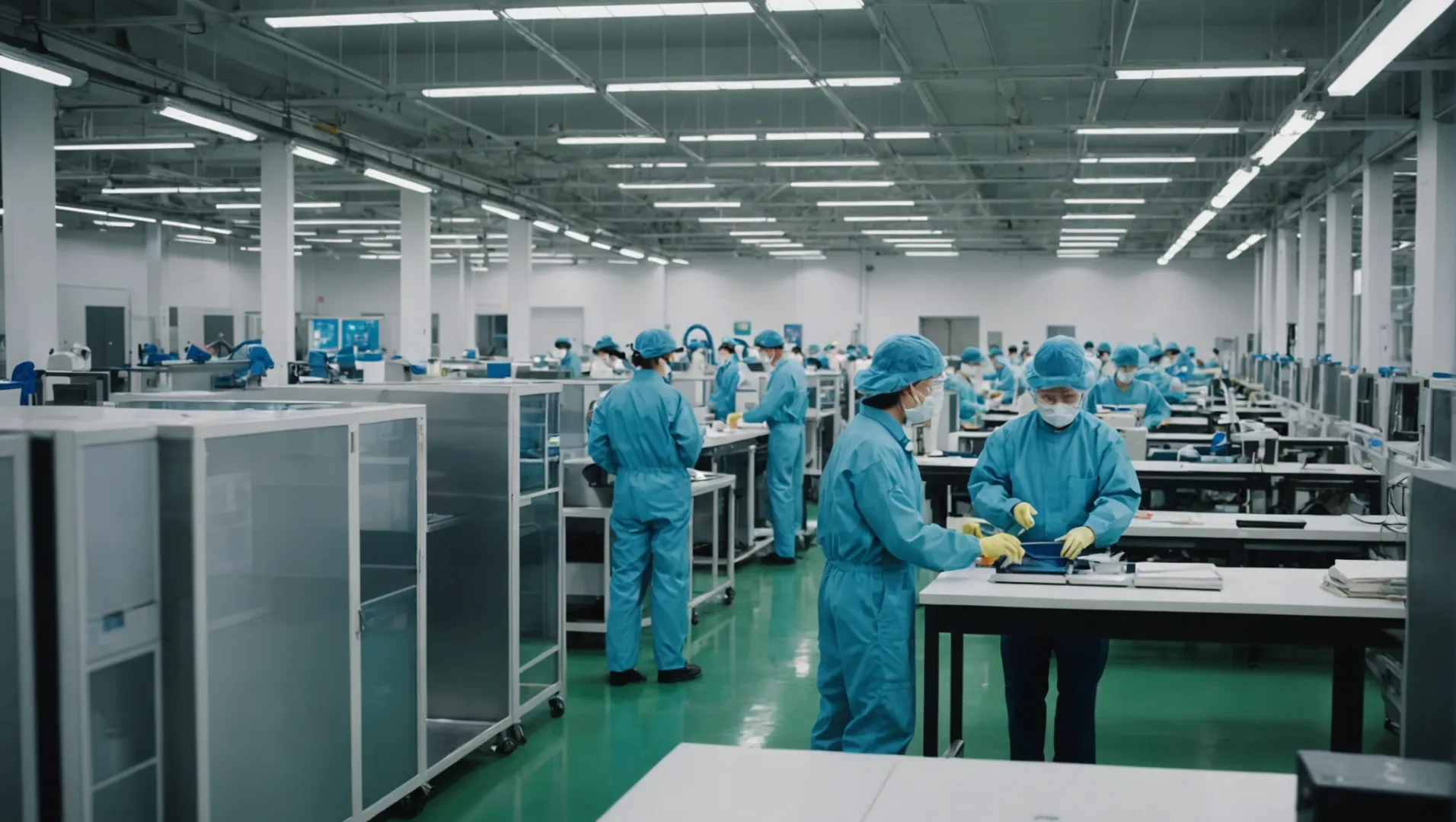
سلسلة التوريد الشاملة
تُعزى هيمنة الصين في مجال تصنيع أجهزة تنقية الهواء إلى حد كبير إلى رسوخها في شبكة سلسلة التوريد1. تضمن هذه الشبكة المعقدة من الموردين والمصنعين تدفقًا سلسًا للمواد الخام والمكونات، مما يقلل بشكل كبير من المهل الزمنية والتكاليف. توفر القدرة على الحصول على جميع الأجزاء الضرورية محلياً للمصنعين المرونة اللازمة للاستجابة بسرعة لمتطلبات السوق.
التطورات التكنولوجية
أدى استثمار الحكومة الصينية في التكنولوجيا إلى دفع قدرات التصنيع في البلاد إلى آفاق جديدة. الأتمتة المتقدمة والابتكار تقنيات الإنتاج2 تسمح بإنتاج أجهزة تنقية الهواء عالية الجودة بكفاءة عالية. يحتل المصنعون الصينيون موقع الصدارة في دمج التقنيات الذكية، مثل إنترنت الأشياء (قدرات إنترنت الأشياء)، في أجهزة تنقية الهواء، مما يعزز الوظائف وجاذبية المستهلك.
التصنيع الفعال من حيث التكلفة
ومع استمرار انخفاض تكاليف العمالة نسبيًا مقارنة بالدول الصناعية الأخرى، تحتفظ الصين بميزة تنافسية في تكاليف التصنيع. وتؤدي وفورات الحجم التي يحققها الإنتاج على نطاق واسع إلى خفض تكاليف الوحدة، مما يجعل أجهزة تنقية الهواء الصينية في متناول المستهلكين العالميين.
الموقع الجغرافي الاستراتيجي
يتيح موقع الصين الاستراتيجي سهولة الوصول إلى الأسواق الآسيوية والعالمية. وتتيح هذه الميزة الجغرافية الشركات المصنعة3 لتوزيع منتجاتها بكفاءة وفعالية من حيث التكلفة، والوصول إلى قاعدة عملاء أوسع.
التحديات والاعتبارات
وعلى الرغم من هذه المزايا، فإن التحديات مثل ارتفاع تكاليف العمالة واللوائح البيئية تشكل تهديدات لهيمنة الصين. علاوة على ذلك، يستلزم المشهد السياسي العالمي والتوترات التجارية تحولات استراتيجية في مواقع الإنتاج للتخفيف من المخاطر. وقد أصبح اعتماد استراتيجية الصين + 1، حيث تقوم الشركات بتنويع قاعدة التصنيع خارج الصين، يحظى بشعبية متزايدة بين الشركات التي تسعى إلى تحقيق التوازن بين المخاطر والفرص.
وباختصار، في حين أن الصين تتصدر صناعة أجهزة تنقية الهواء بسبب بنيتها التحتية القوية وبراعتها التكنولوجية، فإن التحولات الجيوسياسية المستمرة تتطلب دراسة متأنية من قبل الشركات المصنعة عند التخطيط لاستراتيجيات الإنتاج الخاصة بهم.
سلسلة توريد أجهزة تنقية الهواء في الصين هي في الغالب دولية.خطأ
سلسلة توريد أجهزة تنقية الهواء في الصين محلية في المقام الأول.
غالباً ما تشتمل أجهزة تنقية الهواء الصينية على إمكانات إنترنت الأشياء.صحيح
يقوم المصنعون الصينيون بدمج التقنيات الذكية مثل إنترنت الأشياء في أجهزة تنقية الهواء.
كيف تؤثر التعريفات الجمركية على خيارات إنتاج أجهزة تنقية الهواء؟
تؤثر التعريفات الجمركية بشكل كبير على المكان الذي تختاره الشركات المصنعة لإنتاج أجهزة تنقية الهواء، مما يؤثر على كل من التكلفة والاستراتيجية.
يمكن للتعريفات الجمركية أن تدفع المصنعين إلى نقل إنتاج أجهزة تنقية الهواء عن طريق زيادة التكاليف، مما يؤثر على القرارات الاستراتيجية بشأن التوريد والموقع.
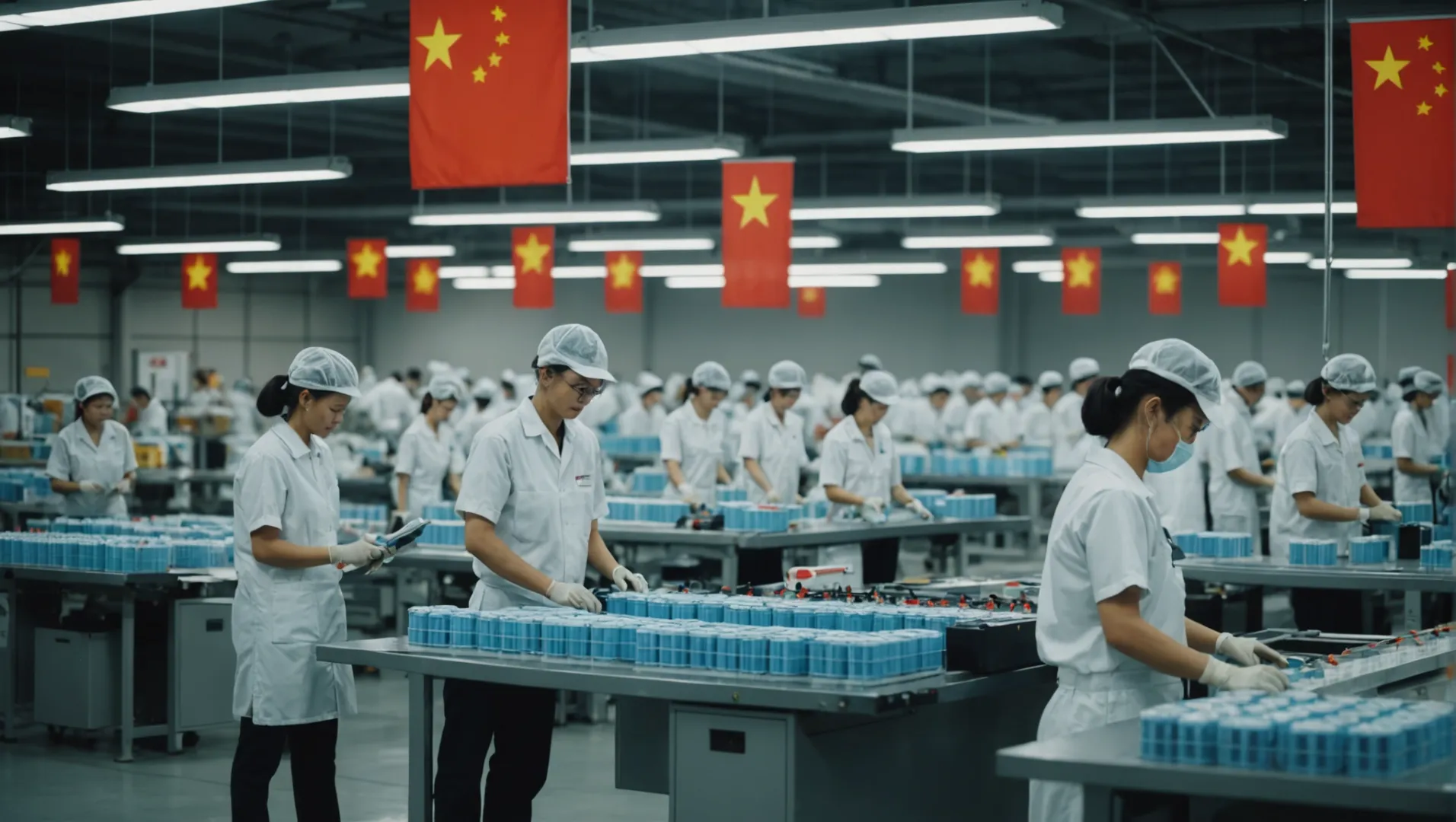
فهم التعريفات الجمركية وآثارها
التعريفات الجمركية هي ضرائب مفروضة على السلع المستوردة ويمكن أن يكون لها آثار عميقة على ديناميكيات التجارة العالمية. بالنسبة لمصنعي أجهزة تنقية الهواء، يمكن لهذه التكاليف الإضافية أن تحدث فرقًا كبيرًا في قرارات الإنتاج. على سبيل المثال، دفعت التعريفات الجمركية المرتفعة على الصادرات الصينية إلى الولايات المتحدة بعض المصنعين إلى التفكير في مواقع بديلة مثل تايلاند.
تحديات التعريفة الجمركية الصينية
مع فرض الولايات المتحدة تعريفات جمركية على الواردات الصينية، واجهت الشركات المصنعة لأجهزة تنقية الهواء زيادة في التكاليف. ويدفع هذا السيناريو الشركات إلى تقييم ما إذا كانت ستستوعب النفقات الإضافية أو تحول الإنتاج إلى مكان آخر. وتتمثل العوامل الحاسمة في مستوى التعريفة الجمركية وفرق التكلفة بين التصنيع في الصين والبلدان الأخرى.
على سبيل المثال، إذا فرضت الولايات المتحدة تعريفة جمركية 60% على أجهزة تنقية الهواء الصينية، فقد يتم إبطال فوائد تكلفة الإنتاج في الصين، مما يجعل تايلاند خيارًا أكثر جاذبية على الرغم من ارتفاع تكاليف الإنتاج قليلاً.
| العامل | الصين | تايلاند |
|---|---|---|
| تأثير التعريفة الجمركية | عالية | منخفضة |
| تكلفة الإنتاج | أقل | أعلى |
| كفاءة سلسلة التوريد | ممتاز | التطوير |
دور تايلاند الناشئ
تقدم تايلاند بديلاً قابلاً للتطبيق لتصنيع أجهزة تنقية الهواء، خاصةً في ظل الحواجز التجارية. وعلى الرغم من أنها قد لا تضاهي كفاءة الصين أو سلسلة التوريد الشاملة في الصين، إلا أن تايلاند تقدم ميزة استراتيجية من خلال تجنب التعريفات الجمركية المرتفعة. وهذا أمر بالغ الأهمية للحفاظ على الأسعار التنافسية في السوق الأمريكية.
ومع ذلك، يجب على المصنعين إدارة التعاون في مجال البحث والتطوير4 بين الفرق الصينية والتايلاندية لضمان استمرارية تطوير المنتج.
الاعتبارات الاستراتيجية للمصنعين
يتضمن قرار نقل الإنتاج بسبب التعريفات الجمركية تحليل عدة عوامل: الجدوى اللوجستية، وإدارة سلسلة التوريد، والمخاطر المحتملة. وتكتسب استراتيجية "الصين + 1"، التي تعمل على تنويع الإنتاج عبر بلدان متعددة، زخمًا كوسيلة للتخفيف من المخاطر المتعلقة بالتعريفات الجمركية.
الاستكشاف الأسواق البديلة5 مثل جنوب شرق آسيا لا يساعد على تجنب التعريفات الجمركية فحسب، بل يفتح أيضًا قواعد استهلاكية جديدة. ومع ذلك، يتطلب الانتقال تخطيطاً دقيقاً واستثماراً في بناء القدرات المحلية.
في نهاية المطاف، في حين أن التعريفات الجمركية يمكن أن تؤثر بشدة على خيارات الإنتاج، إلا أنها توفر أيضًا فرصًا لإعادة المواءمة الاستراتيجية والابتكار في إدارة سلسلة التوريد.
تبلغ الرسوم الجمركية على الصادرات الصينية إلى الولايات المتحدة 60%.صحيح
يذكر السياق التعريفة الجمركية 60% على أجهزة تنقية الهواء الصينية في الولايات المتحدة.
تتمتع تايلاند بتكاليف إنتاج أقل من الصين.خطأ
تكاليف الإنتاج في تايلاند أعلى من الصين، حسب السياق.
ما هي مزايا إنتاج أجهزة تنقية الهواء في تايلاند؟
إن استكشاف تايلاند كمركز لإنتاج أجهزة تنقية الهواء يكشف عن مزايا استراتيجية في ظل تغير ديناميكيات التجارة العالمية.
يوفر إنتاج أجهزة تنقية الهواء في تايلاند مزايا مثل انخفاض الرسوم الجمركية للأسواق الأمريكية، والموقع الاستراتيجي في جنوب شرق آسيا، وقدرات التصنيع الناشئة، مما يجعلها بديلاً عملياً للصين.
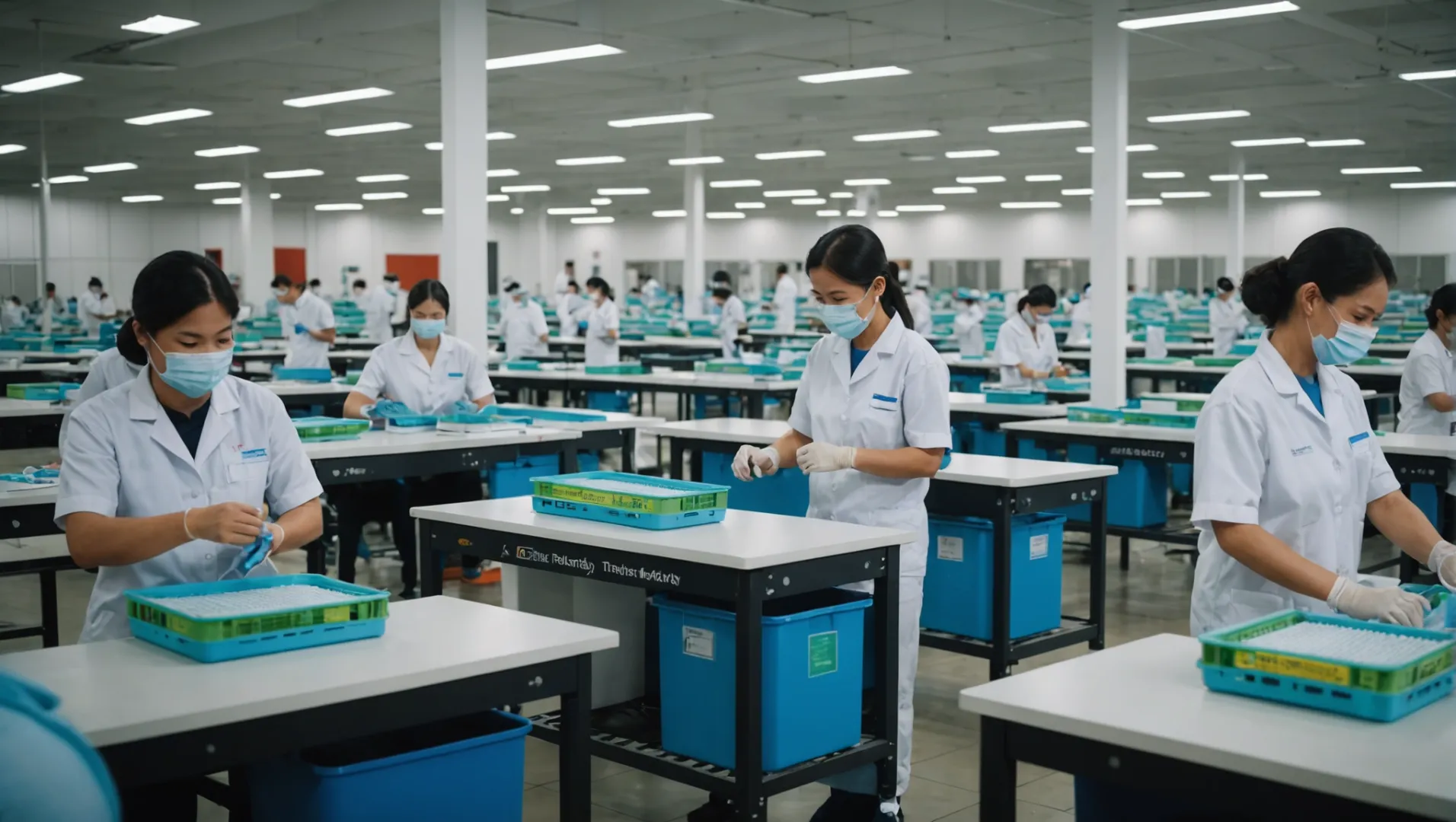
الموقع الجيوسياسي الاستراتيجي
إن موقع تايلاند في جنوب شرق آسيا يضعها في موقع متميز للشركات التي تتطلع إلى التوسع في أسواق الآسيان6. وبفضل قربها من الدول الآسيوية الكبرى، يمكن للمصنعين الوصول بسهولة إلى مجموعة واسعة من المواد الخام وتوزيع المنتجات بكفاءة في جميع أنحاء المنطقة.
مزايا التعريفة الجمركية
في السنوات الأخيرة، أوجدت السياسات التجارية تحديات للتصنيع في الصين، خاصة مع زيادة التعريفات الجمركية على الصادرات إلى الولايات المتحدة. تقدم تايلاند ميزة استراتيجية هنا، حيث يمكن للمنتجات المصنعة في تايلاند تجاوز بعض هذه التعريفات، مما يقلل من التكاليف للشركات التي تستهدف السوق الأمريكية.
قدرات التصنيع الناشئة
على الرغم من أن البنية التحتية للتصنيع في الصين لا مثيل لها في الصين، إلا أن تايلاند تعمل على تطوير قدراتها الخاصة بسرعة. يتزايد الاستثمار في المجمعات الصناعية والمراكز التكنولوجية، مما يوفر فرصًا جديدة للشركات لإنشاء مرافق إنتاج حديثة وفعالة.
| العامل | الصين | تايلاند |
|---|---|---|
| سلسلة التوريد | شامل | التطوير |
| التعريفات الجمركية (السوق الأمريكية) | عالية | أقل |
| تكلفة الإنتاج | أقل | أعلى قليلاً |
| البنية التحتية للبحث والتطوير | متقدم | النمو |
التحديات والاعتبارات
على الرغم من هذه المزايا، فإن إنتاج أجهزة تنقية الهواء في تايلاند ينطوي على تحديات. لا تزال هناك حاجة إلى استيراد معظم المكونات والمواد الخام من الصين، مما قد يزيد من تكاليف الإنتاج بنسبة 10-151 تيرابايت إلى 3 تيرابايت. علاوة على ذلك، قد يتطلب إنشاء قاعدة للبحث والتطوير (R&D) في تايلاند استثمارات إضافية بسبب ندرة المهنيين ذوي الخبرة في هذا المجال.
وللاستفادة من مزايا التصنيع في تايلاند، غالبًا ما تتبع الشركات استراتيجية مزدوجة. فهي تُبقي على عمليات البحث والتطوير في الصين للاستفادة من الخبرات الموجودة مع نقل الإنتاج إلى تايلاند للاستفادة من انخفاض التعريفات الجمركية وتوسيع نطاق وصولها إلى الأسواق. تحظى استراتيجية "الصين + 1" هذه بشعبية متزايدة بين الشركات التي تتطلع إلى تنويع سلاسل التوريد7.
تقدم تايلاند تعريفات جمركية أقل لصادرات أجهزة تنقية الهواء الأمريكية.صحيح
تسمح اتفاقيات تايلاند التجارية بتخفيض التعريفات الجمركية مقارنة بالصين.
تكاليف التصنيع في تايلاند أقل من الصين.خطأ
تكاليف الإنتاج في تايلاند أعلى قليلاً من الصين.
هل استراتيجية الصين+1 هي مستقبل صناعة أجهزة تنقية الهواء؟
تكتسب استراتيجية "الصين + 1" زخمًا بين المصنعين الذين يسعون إلى تنويع قواعد إنتاجهم خارج الصين.
تنطوي استراتيجية "الصين + 1" على قيام المصنعين باستكمال عملياتهم في الصين بمرافق في بلدان أخرى، مما يخفف من المخاطر مثل التعريفات الجمركية والتوترات الجيوسياسية. بالنسبة لإنتاج أجهزة تنقية الهواء، تضمن هذه الاستراتيجية الاستمرارية والمرونة في سلاسل التوريد، مما يجعلها خيارًا جذابًا لمناظر التصنيع المستقبلية.
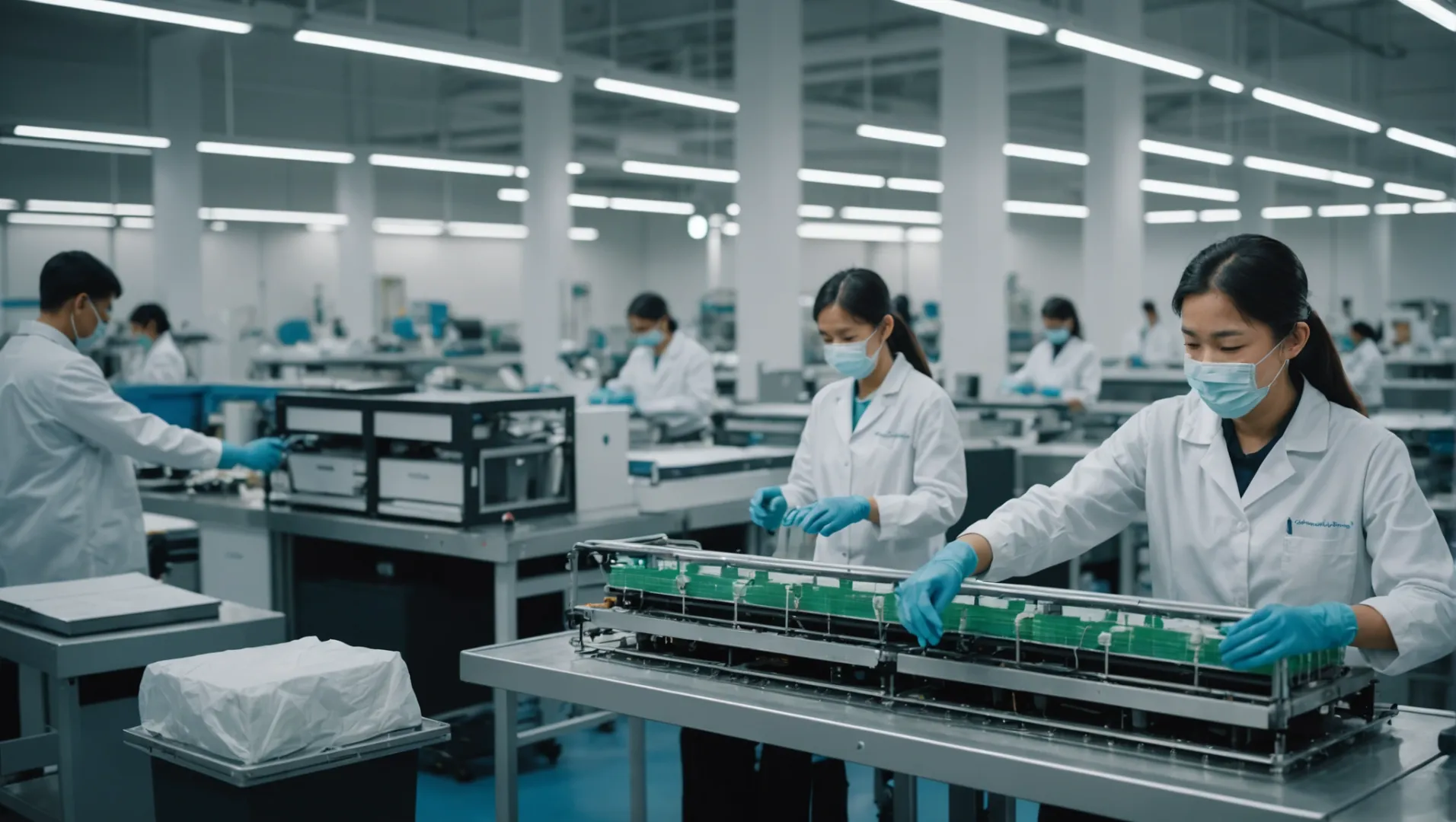
فهم استراتيجية "الصين + 1"
إن استراتيجية "الصين + 1" هي نهج تجاري تقوم فيه الشركات بإنشاء مرافق إنتاج إضافية خارج الصين مع الحفاظ على عملياتها داخل البلد. وقد ظهرت هذه الاستراتيجية كاستجابة للتوترات التجارية المتزايدة وفرض الرسوم الجمركية والحاجة إلى تنويع سلسلة التوريد. وبالنسبة لمصنعي أجهزة تنقية الهواء، فإن اعتماد هذه الاستراتيجية يمكن أن يوفر حاجزًا ضد الاضطرابات المحتملة.
فوائد التنويع في التصنيع
-
تخفيف المخاطر: من خلال توسيع الإنتاج إلى بلد آخر، تقلل الشركات من اعتمادها على موقع واحد. وهذا مفيد بشكل خاص في الحالات التي قد تؤثر فيها التعريفات الجمركية أو القضايا السياسية على العمليات. في حالة أجهزة تنقية الهواء، التي تعتمد في كثير من الأحيان على سلاسل التوريد المعقدة، فإن وجود قاعدة تصنيع ثانوية يمكن أن يمنع التأخيرات المكلفة.
-
إدارة التكاليف: على الرغم من أن تكاليف التصنيع في الصين أقل بشكل عام، إلا أن بلداناً مثل تايلاند توفر فرصاً للتسعير التنافسي عند النظر في التعريفات الجمركية والنفقات اللوجستية. على سبيل المثال، إذا ارتفعت التعريفات الجمركية الأمريكية على السلع الصينية بشكل كبير، فإن الإنتاج في تايلاند - على الرغم من ارتفاع تكاليف الإنتاج بشكل طفيف - يمكن أن يصبح أكثر اقتصاداً بسبب انخفاض أعباء التعريفات الجمركية.
-
الوصول إلى الأسواق: إن إنشاء وجود في بلدان متعددة يمكن أن يسهل الوصول إلى الأسواق المختلفة. وبالنسبة لشركات أجهزة تنقية الهواء، فإن وجود قواعد إنتاج أقرب إلى الأسواق الرئيسية مثل جنوب شرق آسيا يمكن أن يؤدي إلى أوقات تسليم أسرع وربما تكاليف شحن أقل.
التحديات والاعتبارات
على الرغم من المزايا، هناك تحديات مرتبطة بتنفيذ استراتيجية "الصين + 1":
-
تعقيد سلسلة التوريد: يمكن أن تؤدي إدارة سلاسل التوريد عبر بلدان متعددة إلى زيادة التعقيد اللوجستي. ولا يزال يتعين استيراد معظم المكونات والمواد الخام لأجهزة تنقية الهواء من الصين، مما قد يعوض بعض فوائد التكلفة المكتسبة من التنويع.
-
تخصيص الموارد: يتطلب الحفاظ على الكفاءة تخصيصاً استراتيجياً للموارد بين مواقع الإنتاج الأولية والثانوية. وقد تحتاج الشركات إلى الاستثمار في تدريب وتطوير فرق البحث والتطوير المحلية لضمان اتساق جودة المنتج والابتكار.
-
الاختلافات الثقافية والتنظيمية: يمكن أن يشكل التنقل بين البيئات التنظيمية المختلفة والفروق الثقافية الدقيقة تحديات إضافية. إن بناء الشراكات المحلية وفهم اللوائح التنظيمية الإقليمية أمران ضروريان لسلاسة العمليات.
التوقعات المستقبلية لمصنعي أجهزة تنقية الهواء
تستعد استراتيجية "الصين + 1" للعب دور حاسم في تشكيل مستقبل صناعة أجهزة تنقية الهواء. فمع استمرار تطور ديناميكيات التجارة العالمية، من المرجح أن تتمتع الشركات التي تتكيف من خلال تنويع إنتاجها بمرونة وتنافسية أكبر في السوق. استكشاف كذلك في اتجاهات التجارة الدولية8 يمكن أن توفر رؤى إضافية حول كيفية تحسين المصنعين لاستراتيجياتهم لتحقيق النجاح على المدى الطويل.
تقلل استراتيجية الصين + 1 من الاعتماد على موقع واحد.صحيح
تنويع مواقع الإنتاج يخفف من المخاطر ويعزز المرونة.
يتم الحصول على معظم مكونات أجهزة تنقية الهواء من تايلاند.خطأ
يتم استيراد المكونات في المقام الأول من الصين، وليس من تايلاند.
الخاتمة
وفي الختام، فإن الموازنة بين نقاط القوة في الصين مقابل المزايا الناشئة في تايلاند أمر ضروري لاتخاذ قرارات مستنيرة بشأن التوريد. ابقَ في طليعة الاتجاهات العالمية لتتمكن من الإبحار في هذه السوق الديناميكية.
-
استكشف تعقيدات شبكة سلسلة التوريد الواسعة في الصين: قُدّر حجم سوق أجهزة تنقية الهواء في الصين بـ 2.58 مليار دولار أمريكي في عام 2023، ومن المتوقع أن ينمو بمعدل نمو سنوي مركب قدره 7.61 تيرابايت في الفترة من 2024 إلى 2030. ↩
-
تعرف على تقنيات الإنتاج المتقدمة المستخدمة في الصين: يتكون هذا المشروع من جزأين. أولاً، برج يبلغ ارتفاعه سبعة أمتار يمتص الهواء الملوث وينظفه على مستوى النانو. ثانياً، الكربون ... ↩
-
فهم المزايا الجغرافية الاستراتيجية للصين في مجال التصنيع: تشمل المزايا الإقليمية النموذجية الوصول إلى المواد الخام، والوصول إلى قطع الغيار، والعمالة الرخيصة، والعمالة المتخصصة أو الخدمات اللوجستية. ↩
-
اكتشف كيف يعمل التعاون في مجال البحث والتطوير على سد فجوات الإنتاج بين الصين وتايلاند...: شركة LESHA (تايلاند) المحدودة هي واحدة من أكبر موردي الفلاتر في العالم التي تدمج بين البحث والتطوير والإنتاج والمبيعات والخدمات. ↩
-
اكتشف أسواقًا جديدة محتملة في جنوب شرق آسيا لتوسيع المبيعات ..: من المتوقع أن تسجل سوق أجهزة تنقية الهواء في جنوب شرق آسيا معدل نمو سنوي مركب يزيد عن 10.51 تيرابايت في الربع الثالث خلال الفترة المتوقعة (2024-2029). ↩
-
اكتشف كيف يمكن لأسواق الآسيان أن تعزز التوزيع الإقليمي ..: لقد أثبتت منطقة الآسيان قدرتها على التكيف مع التغيرات في البيئة الاقتصادية العالمية، حيث أن بلدان الآسيان مجهزة تجهيزًا جيدًا ... ↩
-
تعلم كيف يمكن لتنويع سلاسل التوريد أن يخفف من المخاطر...: الصين زائد واحد هي استراتيجية تنويع استحوذت على الاهتمام العالمي بين عامي 2014 و2015 بسبب تصاعد تكلفة العمالة في الصين. ↩
-
فهم ديناميكيات التجارة المتطورة لتحسين استراتيجيات التصنيع ..: من المرجح أن تصبح إعادة التوريد، والتوريد شبه التوريني والتوريد الصديق أكثر انتشارًا مع تفاعل الشركات مع نقاط الضعف في توريدها ... ↩



